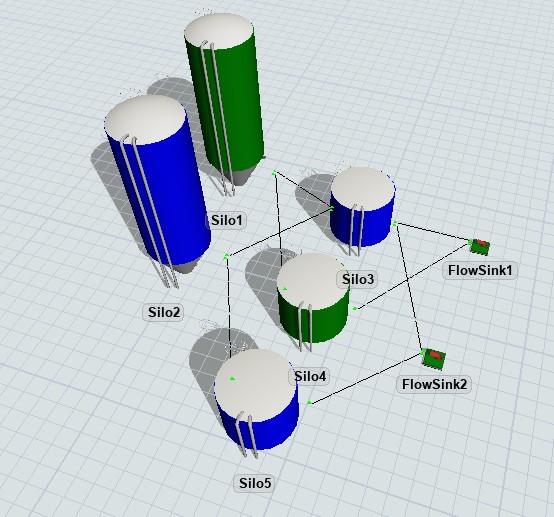Attached is a sample model that attempts to find the best sequence of change of materials store in silo3 in order to quickly empty any of the big silos. The intention is to use optimizeit to discover the best sequence of allocation. Currently, it requires 4 parameters to be set in order to represent 3 instances of allocation on silo3. One parameter SiloChange which gives the sequence of allocation to be read from a globaltable. 3 other parameters which represent the type of materials (2 types) that the silo can possibly store and they writes into each row in the globaltable. I have learn this approach from Optimization using sequence version 22.0.1 - FlexSim Community.

In actual requirement it is needed to find the best sequence of allocations for all silos with added consideration of different incoming materials at different time as well as more than 3 changes anticipated for each silo during simulation time. This will increase the number of parameters required and this seems overwhelming.
Is there a way to reduce the number of parameters require to meet the need of discovering the best sequence of silo allocation using OptQuest? small_sample1.fsmOr Is there a better way to model such requirement?
